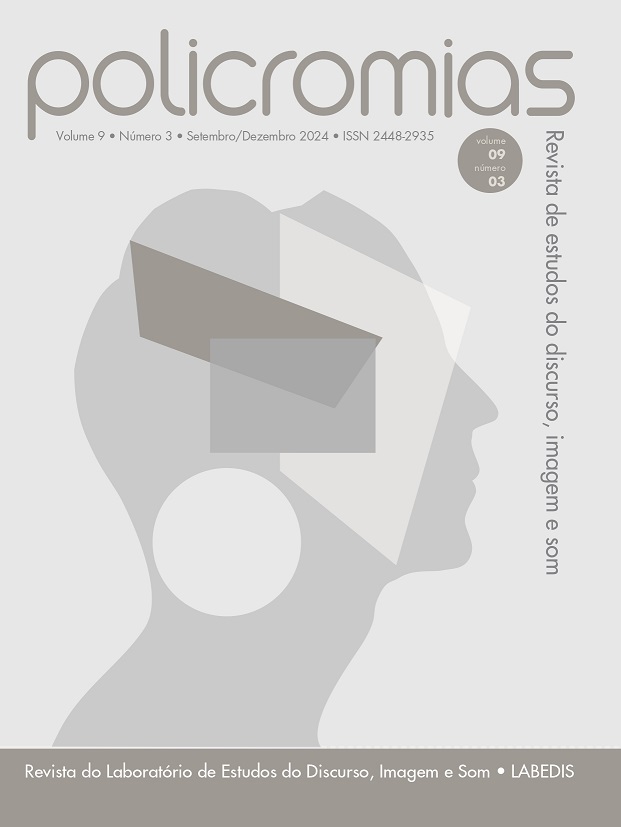DISCURSOS DIGITAIS DO POETA CONTEMPORÂNEO PEDRO GABRIEL
DOI:
https://doi.org/10.61358/policromias.2024.v9n3.63669Abstract
This article focuses on the poetic speech of Pedro Antônio Gabriel Anhorn materialized on his Instagram profile @eumechamoantônio. His works are poems constructed through the interaction between image and word, both drawn on napkins and posted on social media. The general objective of the research was to analyze the characteristics present in the digital discourse of the poet Pedro Gabriel's social network (Instagram). And specifically: i) understand Pedro Gabriel's poems from a linguistic-discursive point of view, considering materialization supports as producers of meaning in a given historical-social situation and ii) Reflect on the impact of the web on contemporary literary production that uses social networks in its creation process. This research is qualitative, based on the French Discourse Analysis (DA) methodology. Through this methodology, the study paths are characterized by a constant “back and forth” between theory and analysis, in which the relationship between description and interpretation prevails, through bibliographical research and interpretation of the selected corpus (discursive analysis). Among the main concepts and theories in dialogue in the research, the following stand out: Marie-Anne Paveau (2021) and Pierre Lévy (2011) for the discussion, respectively, on digital discourse and cyberculture.
Downloads
Published
Issue
Section
License
Copyright (c) 2024 Policromias - Revista de Estudos do Discurso, Imagem e Som

This work is licensed under a Creative Commons Attribution-NonCommercial 4.0 International License.
Os(as) autores(as) dos trabalhos aprovados concordam em ceder à Policromias os direitos não exclusivos de publicação, permanecendo livres para disponibilizar seus textos em outros meios desde que mencionada a publicação da primeira versão na revista. Autorizam, ainda, a revista a ceder seu conteúdo para reprodução em indexadores, repositórios e similares. É vedada a tradução para outro idioma sem a autorização escrita do Editor, ouvida a Comissão Editorial. A responsabilidade do conteúdo dos artigos é exclusiva dos autores.
